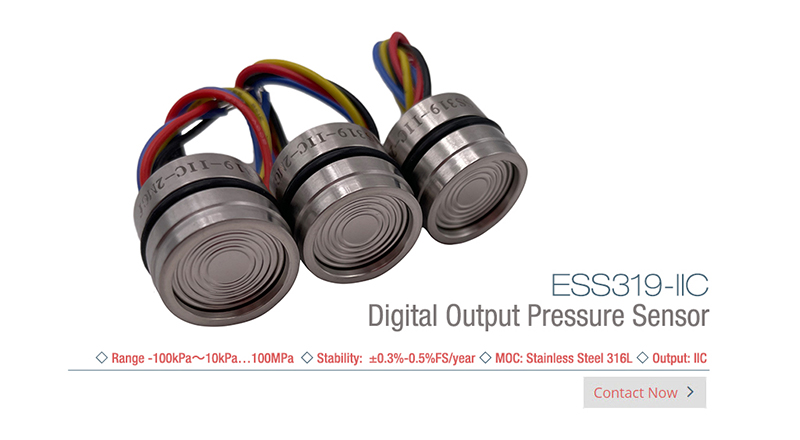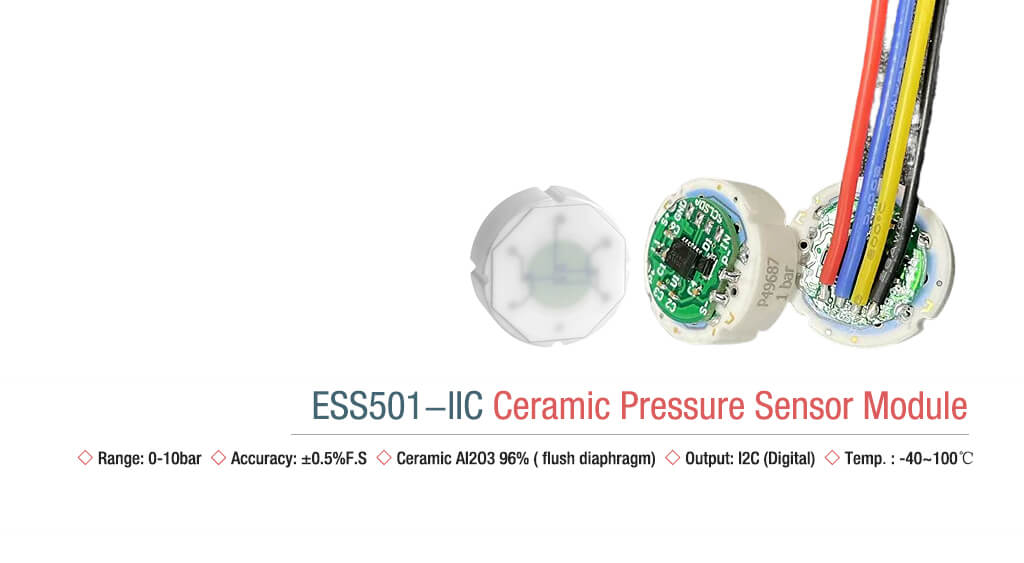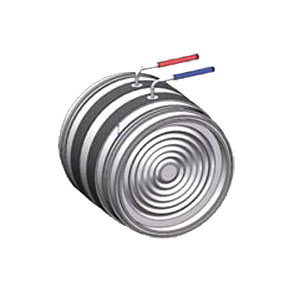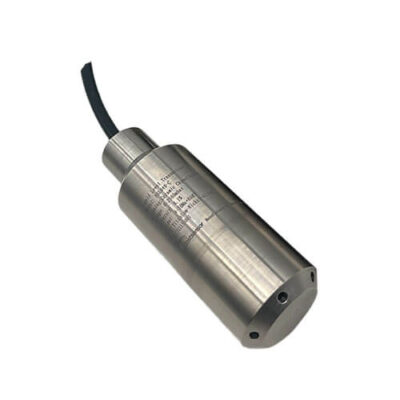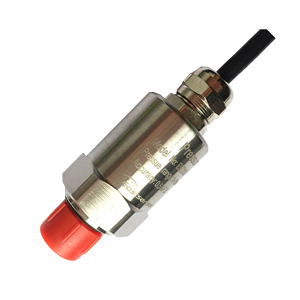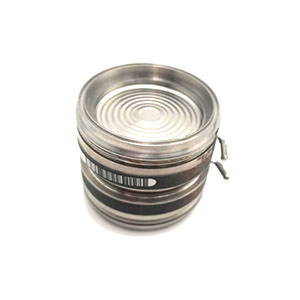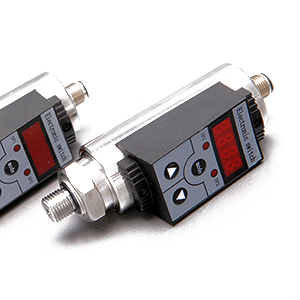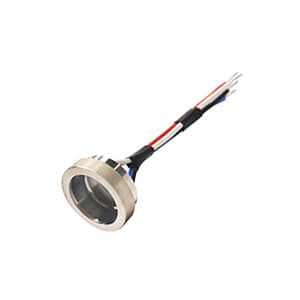Introduction
The Role of I2C Protocol in Pressure Sensor Applications
As an experienced electrical engineer, I can confidently say that the Inter-Integrated Circuit (I2C) protocol plays a crucial role in pressure sensor applications.
I2C is a serial communication protocol that allows multiple devices to communicate with each other over a simple two-wire interface. This simplicity makes it a popular choice for interfacing with pressure sensors.
The I2C protocol allows for high-speed, bi-directional communication between the sensor and the microcontroller. This is particularly important in applications where real-time pressure data is required, such as in
- Industrial automation
- Automotive systems
- Weather monitoring stations
The I2C protocol is also highly scalable, allowing for the integration of multiple pressure sensors on the same I2C bus. This is beneficial in applications where pressure needs to be monitored at multiple points simultaneously, such as in HVAC systems or in complex hydraulic systems.
Overview of I2C Communication Basics
The I2C communication protocol operates over two lines:
- Serial Data Line (SDA)
- Serial Clock Line (SCL)
The SDA line is used for transferring data, while the SCL line provides the clock signal that synchronizes the data transfer.
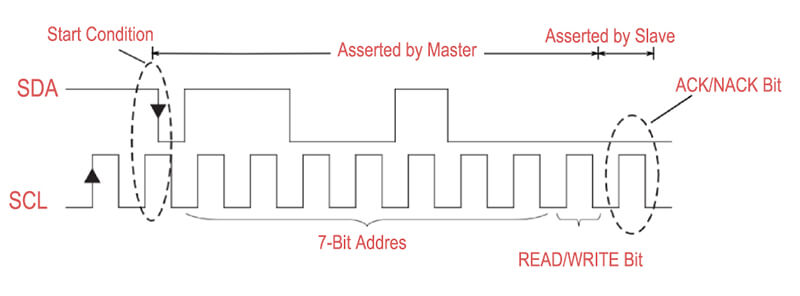
Each device on the I2C bus has a unique address, which allows the microcontroller to communicate with specific devices. In the case of pressure sensors, the I2C address is typically specified by the manufacturer and can sometimes be configured by the user.
Data transfer over the I2C bus occurs in 8-bit packets, with each packet followed by an acknowledgment bit. This acknowledgment bit allows the sender to confirm that the data has been received correctly, improving the reliability of the communication.
The I2C protocol also supports multi-master communication, meaning that multiple microcontrollers can control the same pressure sensor. This is useful in complex systems where redundancy is required, or where multiple microcontrollers need to access the same pressure data.
| Parameter | Description | Example |
|---|---|---|
| Protocol | Serial communication protocol used for interfacing with pressure sensors | I2C |
| Lines | Two lines used for communication: SDA (data) and SCL (clock) | SDA, SCL |
| Addressing | Each device has a unique address for communication | 0x76 (for a specific pressure sensor) |
| Data Transfer | Data is transferred in 8-bit packets, followed by an acknowledgment bit | 8-bit data + 1-bit acknowledgment |
| Multi-Master Support | Multiple microcontrollers can control the same sensor | Useful in complex systems requiring redundancy |
| Speed | I2C supports several speed modes | Standard-mode (100 kbit/s), Fast-mode (400 kbit/s), High-speed mode (3.4 Mbit/s) |
| Noise Immunity | I2C uses a wired-AND function for noise immunity | Noise is filtered out if it doesn't match the AND function |
| Power Consumption | I2C is a low-power protocol | Ideal for battery-powered devices |
| Scalability | Multiple devices can be connected to the same I2C bus | Up to 112 devices on the same bus |
| Error Checking | I2C includes built-in error checking with acknowledgment bits | Ensures reliable data transfer |
| Transmission Distance | I2C is typically used for short-distance communication | Suitable for distances up to a few meters |
Principles
I2C Message Structure and Data Transfer
When it comes to the I2C message structure, it’s important to understand that each I2C transaction consists of a start condition, an address frame, one or more data frames, and a stop condition.
The start condition is a unique signal that marks the beginning of a transaction. It’s generated by the master device and is followed by the address frame.
The address frame contains the 7-bit address of the device the master wants to communicate with, followed by a read/write bit. If the bit is high, the master wants to read from the device. If it’s low, the master wants to write to the device.
The data frames follow the address frame. Each data frame contains 8 bits of data, followed by an acknowledgment bit. The acknowledgment bit is used to confirm that the data has been successfully received.
The stop condition marks the end of the transaction and is generated by the master device.

The data frames would typically contain the pressure data that the pressure sensor is measuring. This data can then be read by the microcontroller and used in whatever application the sensor is being used for.
Importance of Unique Device Addressing and Multi-Master Capability
Unique device addressing is a key feature of the I2C protocol that allows multiple devices to share the same I2C bus.
Each device on the bus has a unique address, which the master device uses to communicate with specific devices. This is particularly important in pressure sensor applications where multiple sensors might be used to monitor pressure at different points in a system.
The multi-master capability of the I2C protocol is another important feature.
This allows multiple master devices to control the same pressure sensor. In a complex system, this can provide redundancy and allow for more flexible system design.
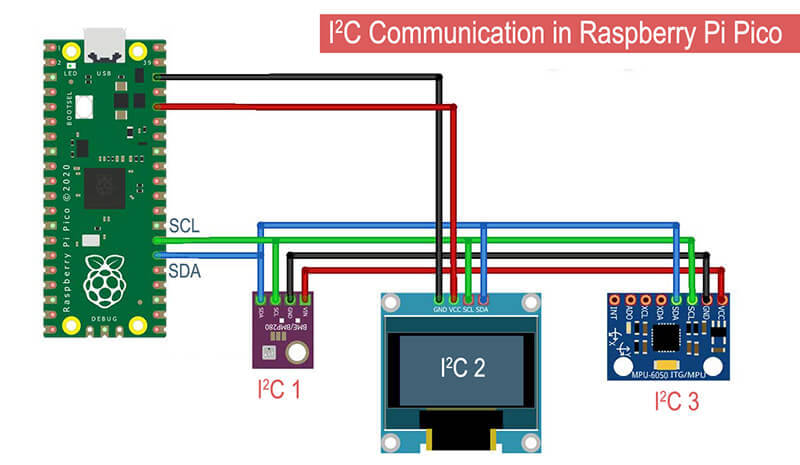
For example, if one microcontroller fails, another can take over its duties without any disruption to the system.
Advantages
Simplified Wiring and Reduced System Complexity
One of the key advantages of I2C pressure sensor is their ability to simplify wiring and reduce system complexity. The I2C protocol operates over a simple two-wire interface, with one wire for data (SDA) and the other for clock (SCL). This is significantly less than what’s required for parallel communication protocols, which can require upwards of 8 data lines plus additional control lines.
This simplified wiring scheme not only reduces the physical complexity of the system, but it also reduces the cost and time associated with wiring and troubleshooting.
Furthermore, it allows for a more compact and lightweight design, which can be particularly beneficial in space-constrained applications such as drones or handheld devices.
High Noise Immunity and Improved Signal Quality
Another advantage of I2C digital output pressure sensors is their high noise immunity.
The I2C protocol uses a wired-AND function for noise immunity, which means that noise is filtered out if it doesn’t match the AND function. This can significantly improve the signal quality, especially in noisy environments or over long transmission distances.
In addition, the use of digital signals means that the data is less susceptible to degradation compared to analog signals. This can result in more accurate and reliable pressure readings, which is crucial in applications such as medical devices or aerospace systems where precision is paramount.
Compatibility with a Wide Range of Devices
Finally, I2C pressure sensor is compatible with a wide range of devices.
The I2C protocol is widely supported by many microcontrollers and single-board computers, including popular platforms like Arduino and Raspberry Pi. This makes it easy to integrate I2C pressure sensors into a variety of systems and applications.
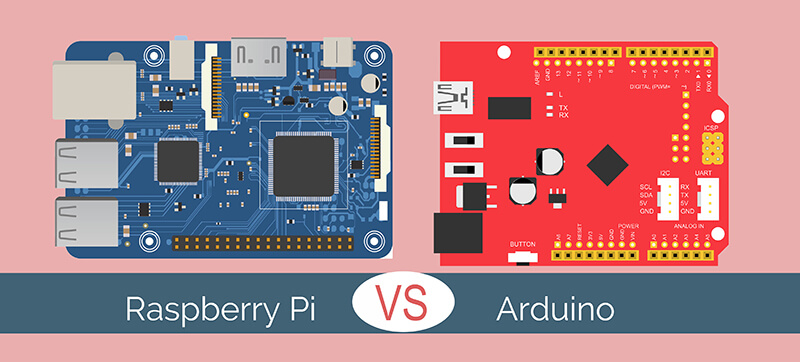
Furthermore, the scalability of the I2C protocol allows for the integration of multiple pressure sensors on the same I2C bus. This can be beneficial in applications where pressure needs to be monitored at multiple points simultaneously, such as in HVAC systems or complex hydraulic systems.
Implementing I2C Pressure Sensor in Common Applications
Industrial Process Control and Automation
In the realm of industrial process control and automation, I2C digital output pressure sensors play a pivotal role. These industries often require real-time monitoring and control of various parameters, including pressure, to ensure the smooth and efficient operation of processes.
For instance, in a hydraulic system, pressure sensors can provide crucial data about the pressure of the fluid in the system. This data can be used to control valves, pumps, and other components to maintain optimal system performance.
The I2C protocol’s ability to support multiple devices on the same bus allows for the monitoring of pressure at various points in the system simultaneously, providing a comprehensive overview of the system’s status.
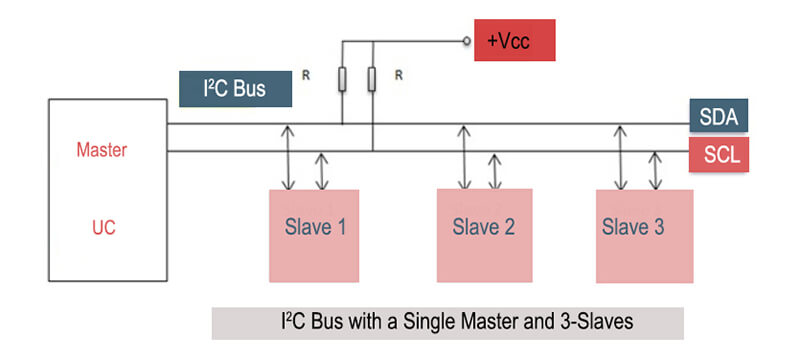
Environmental Monitoring Systems
Environmental monitoring systems are another common application for I2C digital output pressure sensors.
These systems often require the monitoring of atmospheric pressure as part of weather forecasting or climate research.
In these applications, the high noise immunity and improved signal quality of I2C Pressure Sensor can provide accurate and reliable pressure readings, even in challenging environmental conditions.
Furthermore, the low power consumption of the I2C protocol makes it ideal for battery-powered devices, such as portable weather stations or remote sensing devices.
Automotive and Aeronautical Applications
In automotive and aeronautical applications, pressure sensors are used for a variety of purposes, from monitoring tire pressure to measuring the pressure in hydraulic braking systems.
In aircraft, I2C pressure sensors can also be used to monitor cabin pressure and engine oil pressure. In these applications, the robustness and reliability of I2C digital output pressure sensors are of paramount importance.
The high noise immunity of the I2C protocol can ensure reliable communication even in the presence of the electrical noise commonly found in automotive and aeronautical environments.
Furthermore, the ability to connect multiple sensors to the same I2C bus can simplify system design and reduce wiring complexity.
Challenges
Limitations on Communication Speed and Cable Length
While the I2C protocol offers many advantages, it does come with certain limitations.
One of these is the limitation on communication speed and cable length.
The I2C specification defines several speed modes, with the fastest being High-speed mode at 3.4 Mbit/s. However, achieving this speed requires careful design and shorter cable lengths.
As the length of the cable increases, the capacitance of the I2C bus increases, which can limit the speed at which data can be transferred.
In practice, I2C is typically used for communication over distances of up to a few meters.
For longer distances, other communication protocols such as RS485 or Ethernet may be more suitable.
Potential for Interference from Other I2C Devices
Another challenge when using I2C pressure sensors is the potential for interference from other I2C devices.
Because the I2C bus is a shared medium, all devices on the bus can potentially interfere with each other. This is particularly a concern in multi-master systems, where multiple devices can attempt to control the bus at the same time.
To mitigate this, the I2C protocol should include arbitration and collision detection mechanisms.
However, these mechanisms can add complexity to the system and may not completely eliminate the risk of interference, especially in systems with a large number of I2C devices.
In Eastsensor, we provide two kinds of I2C output sensors
Conclusion
As a pressure measurement & control engineer, I can’t stress enough the importance of understanding and implementing I2C technology in pressure sensing applications.
The I2C protocol’s simplicity, scalability, and robustness make it an excellent choice for interfacing with pressure sensors. By understanding the principles of I2C communication, we can design more efficient, reliable, and cost-effective pressure sensing systems.
However, like any technology, I2C is not without its challenges. We also need to understand the limitations of I2C, such as its speed and cable length restrictions and the potential for interference from other I2C devices, is crucial for successful implementation.

